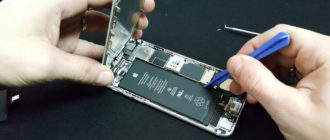Graphene-based batteries are widely used for various commercial purposes. Improving performance and the life-cycle advantage of developing graphene-based batteries over conventional lithium-ion batteries pays off.
Tesla Motors Ilona Mask is a well-known example of innovative companies actively involved in the research and commercialization of graphene batteries.
Content
What is a graphene battery?
Graphene is widely known as "miraculous material" due to the many of its amazing properties that it contains. It is a powerful conductor of electrical and thermal energy, extremely light and flexible with a large surface area. It is also considered environmentally friendly and sustainable, with unlimited possibilities for numerous applications.
Interesting to know! Graphene batteries can reduce the environmental impact of batteries.
Graphene is a universal molecule with many unique and desirable properties, and it can be used in different ways, since there is no universal solution for its use.
It is used to improve many of the benefits already found in conventional materials, but it also helps to overcome previous battery limitations, which leads to increased battery life or battery performance.
How is the production
The conversion of inorganic compounds based on graphene and metals suitable for use can be carried out in many ways. As new technology evolves, methods are often invented and subsequently used.
In any method, there are always several ways to synthesize the material itself. It would be impractical to describe each of them, therefore, one specific method will be considered here.
A pure graphene-based electrode is obtained by dispersing a graphene oxide powder (100 mg) in distilled water (30 ml) and sonication for 30 minutes. The resulting suspension is heated on a hot plate to a temperature of 100 ° C and then 3 ml of hydrazine hydrate is added.
The suspension is maintained at 98 ° C for 24 hours to reduce graphene oxide. Reduced graphene oxide can be collected by filtration, leaving a black powder. The filtered powder is then washed several times with distilled water to reduce excess hydrazine.
The graphene powder was redispersed in water using ultrasound, and the resulting solution was then centrifuged at 4000 rpm for 3 minutes to remove larger particles. Graphene is collected by vacuum filtration and dried in vacuo. On an industrial scale, companies from Great Britain, Russia, Spain, the USA and South Korea produce it.
The principle of operation and device
The principle of operation and the arrangement of graphene batteries are similar to traditional batteries, where two electrodes and an electrolyte solution are used to facilitate ion transfer. The main difference between graphene-based batteries and solid-state batteries is the composition of one or both electrodes.
The change mainly lies in the cathode, but it is also possible to use carbon allotropes in the anode. The cathode in a conventional battery consists solely of solid materials, but a composite hybrid material is used as the cathode in the graphene battery.
Specifications and Features
In the battery field, conventional materials are significantly improved with graphene. Magnesium graphene battery can be lightweight, durable and suitable for storing high-capacity energy, as well as to reduce charging time. It adds conductivity without requiring the amount of carbon that is used in conventional batteries.
Graphene can improve battery properties such as energy density and shape in a variety of ways. Lithium-ion batteries (and other types of rechargeable batteries) can be improved by introducing graphene into the anode of the battery and using material conductivity to achieve morphological optimization and performance.
Important! The conductivity of graphene-based batteries is significantly higher compared to other semiconductor materials.
It has also been discovered that the creation of hybrid materials may be useful for improving battery quality. For example, a hybrid of catalysis of vanadium oxide VO 2 and graphene can be used on lithium-ion cathodes, which provides fast charging and discharging, as well as greater durability of the charging cycle.
In this case, VO 2 has a high energy intensity, but poor electrical conductivity, which can be solved using graphene as a kind of structural "base" on which VO 2 can be attached - creating a hybrid material with both high capacity and excellent conductivity.
Advantages and disadvantages
The list of main advantages should include:
- Ecological cleanliness.
- Large specific capacity.
- High conductivity.
- Quick charge.
- Technical durability.
The only drawback of the battery is that the product has a considerable size. By virtue of this, implanting them into miniature gadgets (for example, phones) today is not possible.
Where are graphene batteries used?
Graphene-based batteries have exciting potential, and although they are not yet fully available, research and development is intense. They are used by many well-known companies.
In August 2014, Tesla proposed the development of a new battery technology that will have almost twice as much power for its electric car model.
As for phones, in November 2016, Huawei introduced a new graphene-coated lithium-ion battery that can remain operational at a higher temperature (60 ° degrees compared to the existing 50 ° limit) and offers a longer battery life.
In December 2018, the Indian company Log 9 Materials announced that it was working on a new project that could theoretically lead to the emergence of electric vehicles running on water.
Technology outlook
According to researchers at popular companies, the latest batteries are much more efficient than traditional products. In addition, they replenish energy much faster (in minutes).
This technology will lead to a revolution in the development of electric cars, the production of smartphones, as well as laptop computers and tablets.
Have questions or have something to add? Then write to us about it in the comments, this will make the material more useful, complete and accurate.










